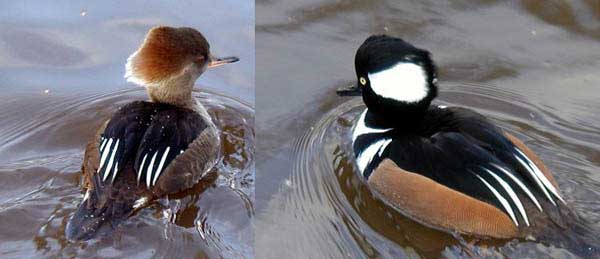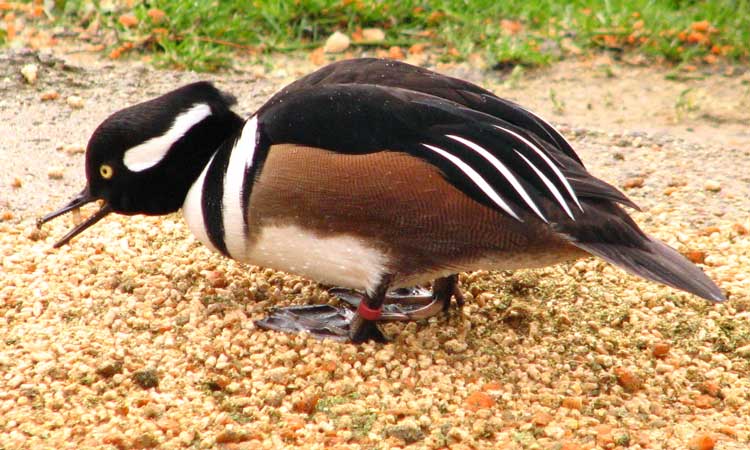Lophodytes cucullatus (*) Cladus: Eukaryota
Lophodytes cucullatus (*) Name Lophodytes cucullatus (Linnaeus, 1758) References * Syst.Nat.ed.10 p.129 Vernacular names The Hooded Merganser (Lophodytes cucullatus) is a small duck and is the only member of the genus Lophodytes. Hooded Mergansers have a crest at the back of the head which can be expanded or contracted. In adult males, this crest has a large white patch, the head is black and the sides of the duck are reddish brown. The adult female has a reddish crest, with much of the rest of the head and body a greyish-brown. The Hooded Merganser has a sawbill but is not classified as a typical merganser. Hooded Mergansers are the second smallest species of merganser, with only the Smew of Europe and Asia being smaller, and is also the only Merganser restricted to North America (naturally anyway). Their breeding habitat is swamps and wooded ponds on the northern half of the United States or southern Canada. They prefer to nest in tree cavities near water but will use Wood Duck nesting boxes if available and unoccupied. They form pairs in early winter. The male leaves the female soon after she lays her eggs, leaving her responsible for all incubation. After hatching, chicks leave the nest with their mother within 24 hours; they are already able to dive and feed themselves, although they remain with their mother for another five weeks.[2] Hooded Mergansers are short distance migrants and winter in the United States wherever winter temperatures allow for ice free conditions on ponds, lakes and rivers. A few of these ducks have occurred as vagrants to Europe, however, this attractive species is so common in captivity that most birds seen in the wild in Europe are simply escapees. These ducks feed by diving and swimming under water to collect small fish, crustaceans and aquatic insects. They find their prey underwater by sight.[2] A species of fossil duck from the Late Pleistocene of Vero Beach, Florida, was described as Querquedula floridana (a genus now included in Anas), but upon reexamination turned out to be a species closely related to the Hooded Merganser; it is now named Lophodytes floridanus, but the exact relationship between this bird and the modern species is unknown. Appearance
First-winter birds differ from adult females, in having a grey-brown neck and upperparts (black on adult females), and narrower white tertial-edges than adults; all females are dark-eyed whereas in first-winter males, a pale eye is acquired during the winter.[3] Distribution Vagrancy to Europe Although Hooded Merganser is a common species in captivity in Europe, and most records in the wild are regarded as escapes, a small number of birds have been regarded as genuine wild vagrants. Britain's current first accepted record is a bird which was seen on North Uist in October 2000.[4] References 1. ^ BirdLife International (2004). Lophodytes cucullatus. 2006. IUCN Red List of Threatened Species. IUCN 2006. www.iucnredlist.org. Retrieved on 11 May 2006. Database entry includes justification for why this species is of least concern. Source: Wikipedia, Wikispecies: All text is available under the terms of the GNU Free Documentation License |
|


